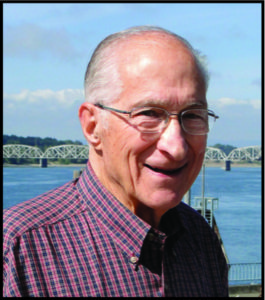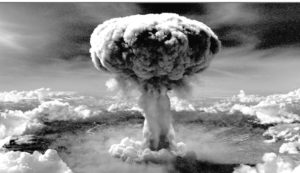
 As we approached the August 1945 anniversary of Hiroshima and Nagasaki, the media and many politicians trot out the myth that dropping the bombs saved a large number of American soldiers who did not have to invade the Japanese mainland. The majority of American citizens believe this false history.
As we approached the August 1945 anniversary of Hiroshima and Nagasaki, the media and many politicians trot out the myth that dropping the bombs saved a large number of American soldiers who did not have to invade the Japanese mainland. The majority of American citizens believe this false history.
By following the war in the Pacific the Hiroshima Myth can be resolved. Prior to the June 1944 invasion of Saipan, there were no apparent peace feelers from Japan. However, Saipan was Japan’s so called “Crown Jewel” in the Pacific. The fall of Saipan opened an avenue for peace. It facilitated the ousting of Tojo from the premiership. As the author of the war he would never have consented to abandon the struggle. He resigned July 18, 1944.
Tojo’s resignation provided an appropriate environment for a Hawaii meeting later in July 1944. It was attended by FDR, General MacArthur and Admirals Nimitz, Hadley and Leahy. Leahy was FDR’s Chief of Staff. They advised FDR that Japan could be defeated without an invasion of the Japanese homeland.
A group headed by Japan’s Prince Konoye made peace advances through Sweden in September 1944 but FDR declined to respond. It is ironic that FDR was not moved by an appeal from Prince Konoye. He should have remembered from before Pearl Harbor when Konoye, then Japans’ Prime Minister, let it be known through intermediaries that he was very flexible in negotiations.
A document that effectively addressed the unconditional surrender requirements arrived in General MacArthur’s Australian office in January 1945. It’s terms were virtually identical to the terms accepted by Japan on the deck of the Battleship Missouri in September 1945.
What this tells us is that our armed forces invaded Iwo Jima, Okinawa and The Philippines while the surrender papers were (in effect) in the White House. The total fatalities on these three islands were 37,100 or 35 percent of the total 106,000 U.S. fatalities in the Pacific.
Another event involved a personal experience. My ship, a 110 foot sub chaser, was not suited for those prone to motion sickness. On our way from the States to Pearl Harbor, a crew member known as Tiny experienced serious motion sickness. He was assigned to shore duty in Pearl Harbor and ultimately became a “gofer” for Admiral Nimitz.
May 1945 my ship was sent to the States for maintenance. We stopped at Pearl Harbor for fuel. Within hours, Tiny came aboard and joined in our celebration — we’re going home! But, I added, we will be back in about three months. Tiny emphatically said “No, the war is over with”. We asked for an explanation to the dramatic comment. He quoted Admiral Nimitz as saying we have sunk every Japanese transport ship as part of a complete embargo. The Admiral wants to finish the invasion of Okinawa and The Philippines and then no more bloodshed. He went on to say the Army is asking for a huge amphibious force to attack Japan but considers it “frivolous”.
It is well known that FDR spent little time with Vice President Truman. However, after Truman became president, he received council from many seasoned leaders. For the sake of brevity, here are two of them.
On or about July 20, 1945, General Eisenhower in a personal visit urged Truman not to use the atomic bomb. Eisenhower’s assessment was “It wasn’t necessary to hit them with that awful thing — to kill and terrorize civilians, without even attempting (negotiations) was a double crime”.
Recall, Admiral Leahy was involved in the January 1945 peace proposal from Japan. As Chairman of the Joint Chiefs of Staff, Admiral Leahy pleaded with Truman not to introduce that barbarous device into the inventory of warfare. He went on to advise Truman to revise the unconditional surrender policy so that the Japanese could surrender and keep their Emperor.
Summarizing— For at least one year, Japan sent out a multitude of peace feelers. We did not respond until after Russia entered the Pacific war. And that was after Hiroshima. Could it be we deliberately delayed the end of the war for almost a year so Russia could communize North Korea, Manchuria, China and various warm water ports? For you historians, does it remind you of the title of John Stormer’s 1964 book, None Dare Call It Treason?
Art Crino is a combat veteran of WW II, graduate of OSU in Electrical Engineering and his career was in engineering and factory management. Art may be contacted by e-mail at: crino9850@comcast.net
No Comments
Leave a comment Cancel